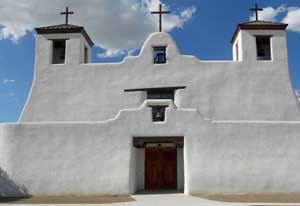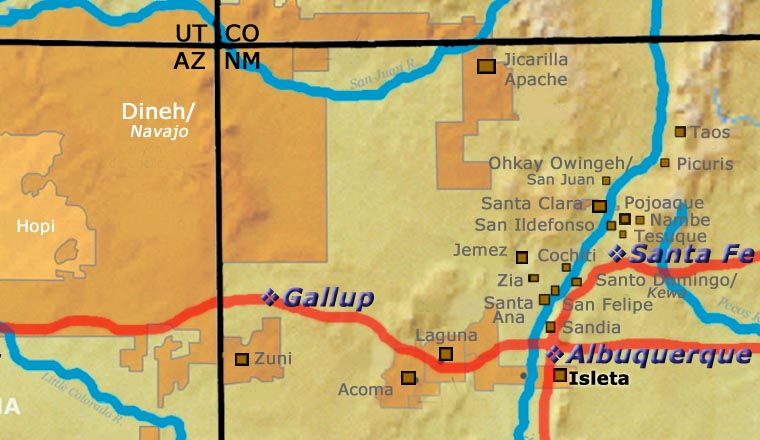
Robin Teller
Isleta
The daughter of Stella and Louis Teller, Robin was born on April 6, 1954. By the time she was in her teens, her mother was a well-established potter with a growing collection of hard-earned ribbons. Robin learned the traditional art from her mother and by 1991, she was earning ribbons of her own from the SWAIA Santa Fe Indian Market, Heard Museum and Guild (Phoenix, AZ) and the Eight Northern Pueblo Arts and Crafts Show at Ohkay Owingeh (San Juan Pueblo), near Espanola, NM.
Robin is most known for her Mother Nature storytellers and Nativities but she also creates jars, bowls, and human and animal figures. Like her mother Stella, Robin prefers to put "sleeping eyes" on her storytellers and Nativities.
The mother of two and grandmother of five, she says she gets her inspiration from them, as well as from her spiritual journey through life's experiences and her reverence for all of our Creator's blessings.
She integrates those feelings and emotions into her pottery creations, always as part of an individual story or message. Her work is always recognizable due to the intricate detailing in her forms and designs. For her, pottery is a mini-canvas.
Robin tells us there's a standard of excellence and quality to uphold in relation to the family tradition. That can be seen in the ways in which she expresses her innermost feelings about love, hope and beauty, for the world and for humanity.
Robin has passed her knowledge of the traditional art to her daughter, Leslie Teller Velardez, who has also blossomed into an award-earning potter.
100 West San Francisco Street, Santa Fe, New Mexico 87501
(505) 986-1234 - www.andreafisherpottery.com - All Rights Reserved

Isleta Pueblo

San Agustin de la Isletas Mission
Isleta Pueblo is said to have been founded in the 1300s. Archaeologists have put forth various ideas as to where the people came from with some scholars saying they migrated north from Mogollon/Mimbres settlements to the south while others say they migrated southeastward from either Chaco Canyon in the 1100s and 1200s or from the Four Corners area in the 1200s and 1300s. Their Tiwa language is shared with nearby Sandia Pueblo and a very similar tongue is spoken to the north at Taos and Picuris Pueblos. The two dialects are sometimes referred to as Southern and Northern Tiwa.
In 1540, when Coronado passed by, there were 15 major and minor Tiwa pueblos in the Middle Rio Grande area, and he seems to have attacked every one of them, looking for food and gold. By 1598, when Don Juan de Oñaté came north to conquer and occupy Nuevo Mexico, he found only Isleta and Alameda (Sandia) left. The others had all succumbed to European diseases introduced to them 60 years before, diseases they had no immunity to.
When the Franciscan priests arrived in the area (with de Oñatéin 1598 CE) they named the pueblo "Isleta" (meaning: island). The residents were relatively accommodating to the Spanish priests when compared to the reception the same priests got in other areas of Nuevo Mexico (making Isleta something of an "island of safety" for the Spanish in an ocean of hostility). When the Pueblo Revolt of 1680 happened, Isleta either couldn't or wouldn't participate in the rebellion. When the Spanish governor left Santa Fe he went to Albuquerque first, then to Isleta, and gathered his priests and troops. None wanted to go back north to fight so when they left and headed south, many Isletans went south to the El Paso area with them. Others fled to the Hopi settlements in Arizona and returned after the fighting was clearly over, many with Hopi spouses. When the Spanish returned in 1682 they found the Isleta mission church burned and the main structure was being used as a livestock pen. When the Spanish returned in force in 1692 they found Isleta completely empty and burned. The governor ordered the pueblo be rebuilt and resettled so residents were brought in from Taos and Picuris to the north and from Ysleta del Sur to the south, near El Paso. By 1720 a new, grander mission had been rebuilt on the foundations of the first.
Over the next century dissident members of the Laguna and Acoma Pueblo communities migrated to Isleta. While they were welcomed into the main Isleta pueblo at first, friction developed over the years until in the late 1800s, the small communities of Oraibi and Chicale were established. Most of the newcomers moved to one or the other.
The advent of the railroad in New Mexico was almost the end of the Isleta community as so many of the men went to work for the railroad. While the remaining residents managed to hold on to some of their social and religious practices, other elements of their culture almost disappeared, pottery making being one of those traditions that barely survived.
Today, making pottery the traditional way is practiced by only a few potters and their close family members.
100 West San Francisco Street, Santa Fe, New Mexico 87501
(505) 986-1234 - www.andreafisherpottery.com - All Rights Reserved
